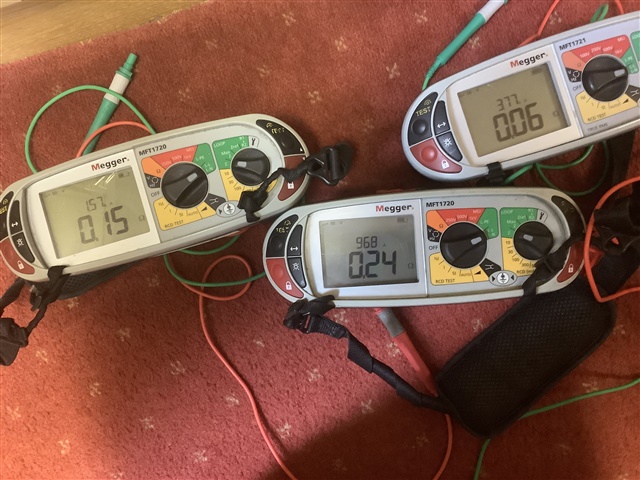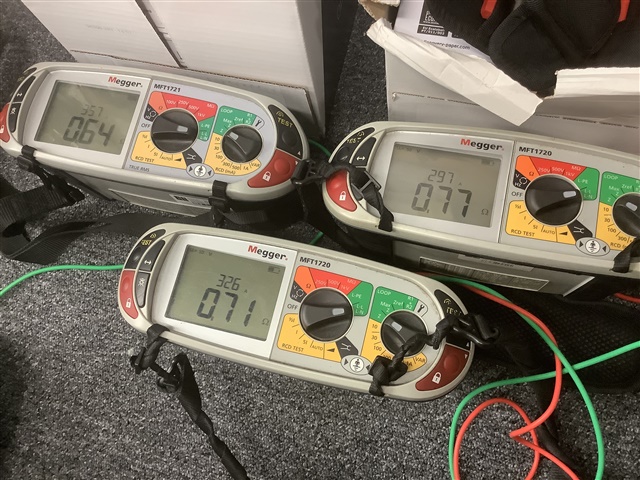Not sure what to record! 
All calibrated around the same time. Three readings taken on each instrument with swapped leads and probes all fairly consistent with photo.
Then move to a socket opened up using same leads;

I did consider the SoC, and cannot comment on noise. However, you will note at the higher impedance the % deviation from average is 9.4 while at the lower end somewhere in the order of 60%.
We have a 1741 + but it was not on site.
Previous result recorded by me on a different instrument 5 years ago was 1.58x2.
Will commence experimenting at the training centre during 2391 where we have access to a board close to the intake.
at the higher impedance the % deviation from average is 9.4 while at the lower end somewhere in the order of 60%.
Or a difference in range of 0.18 Ω, giving a deviation of ± 0.9 Ω from the centre of the range.
I guess what this experiment illustrates is that:
at the higher impedance the % deviation from average is 9.4 while at the lower end somewhere in the order of 60%.
Or a difference in range of 0.18 Ω, giving a deviation of ± 0.9 Ω from the centre of the range.
I guess what this experiment illustrates is that:
We're about to take you to the IET registration website. Don't worry though, you'll be sent straight back to the community after completing the registration.
Continue to the IET registration site